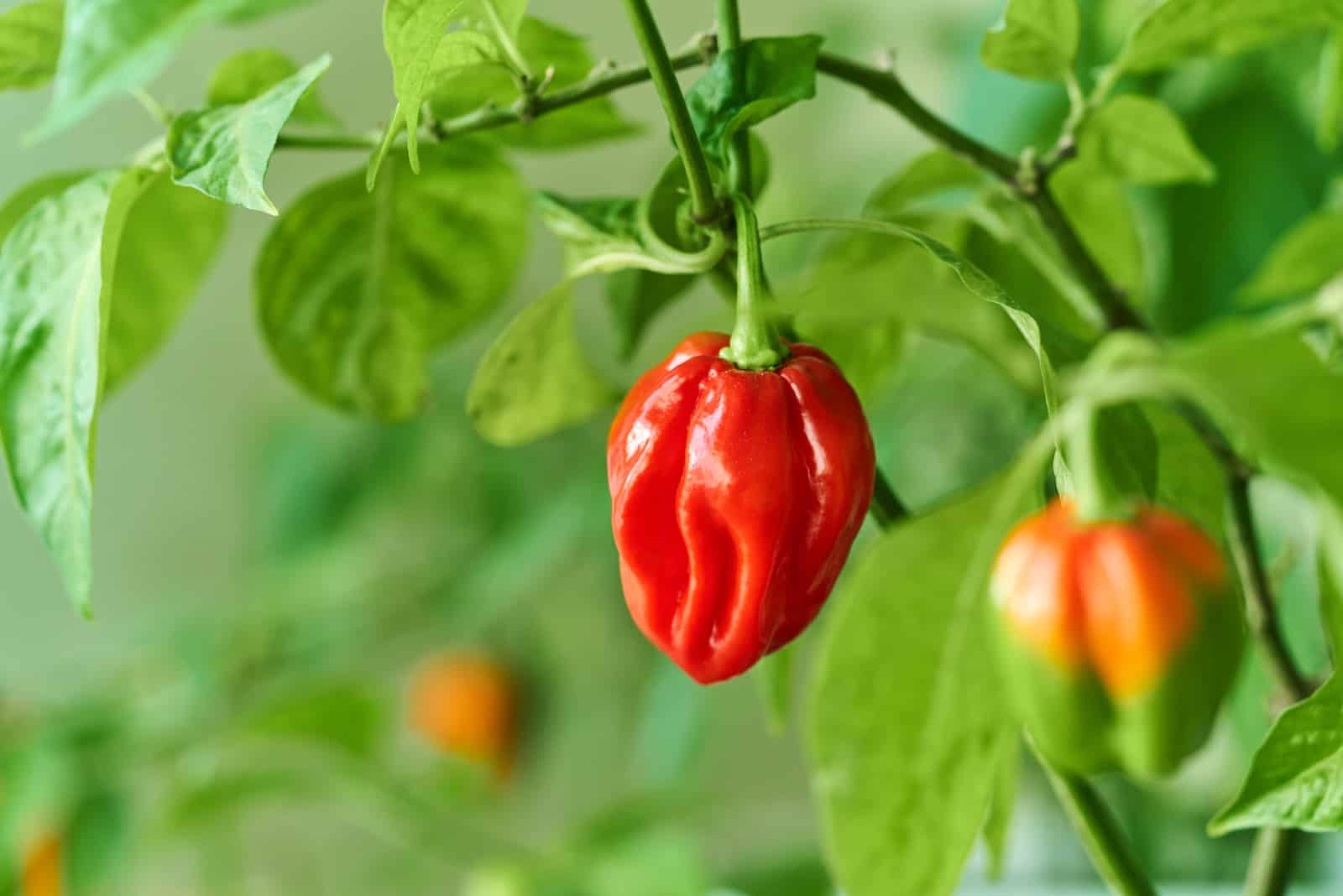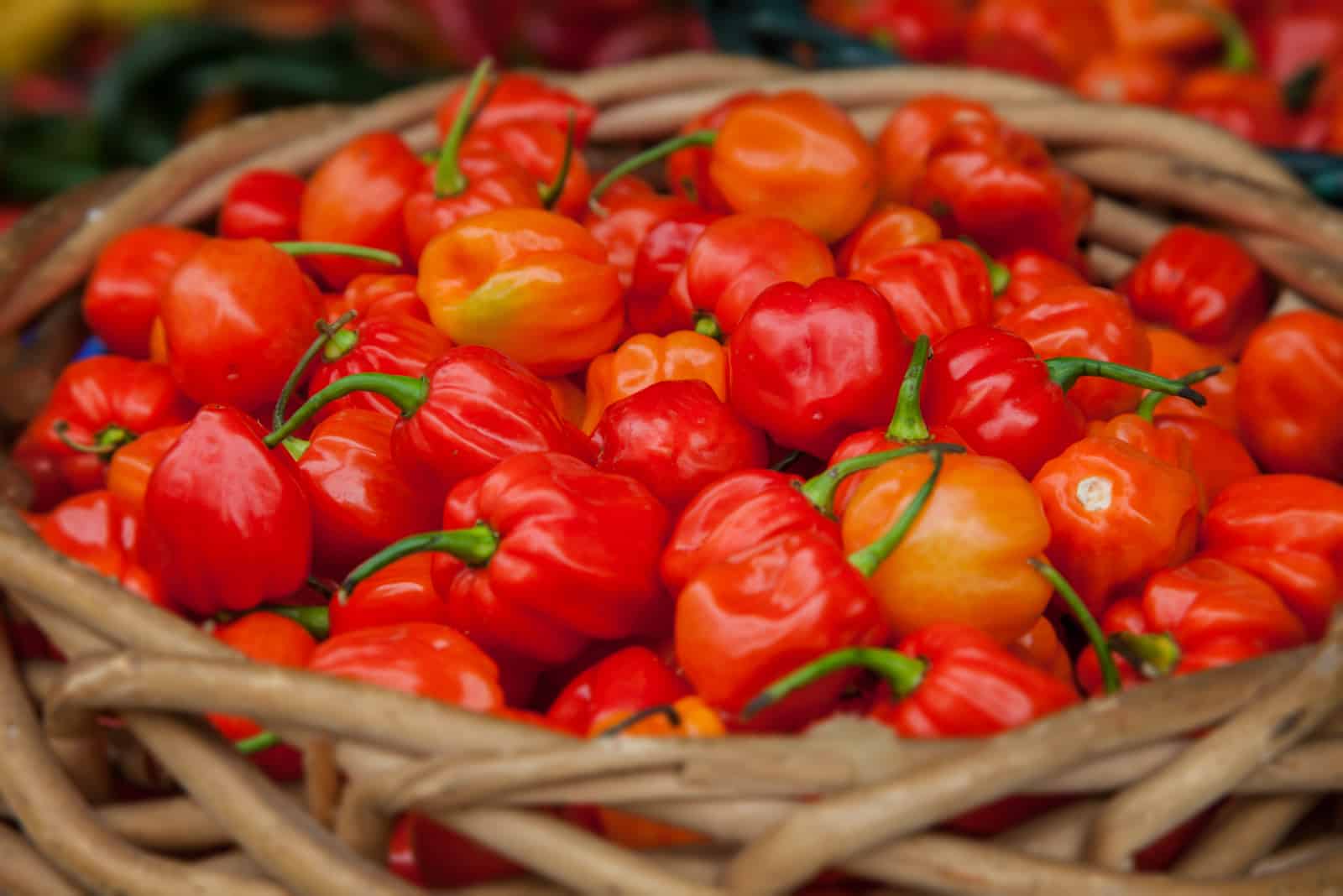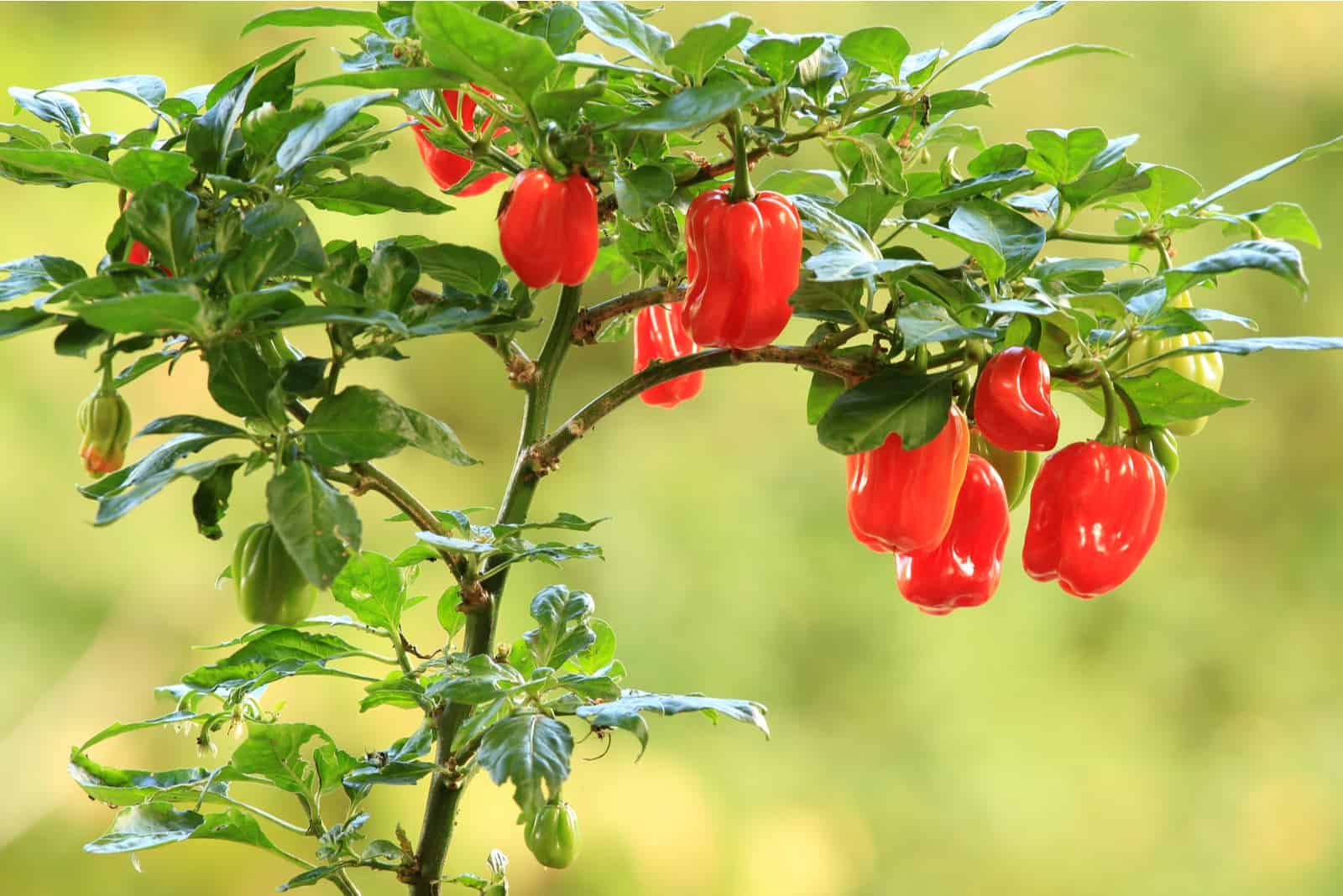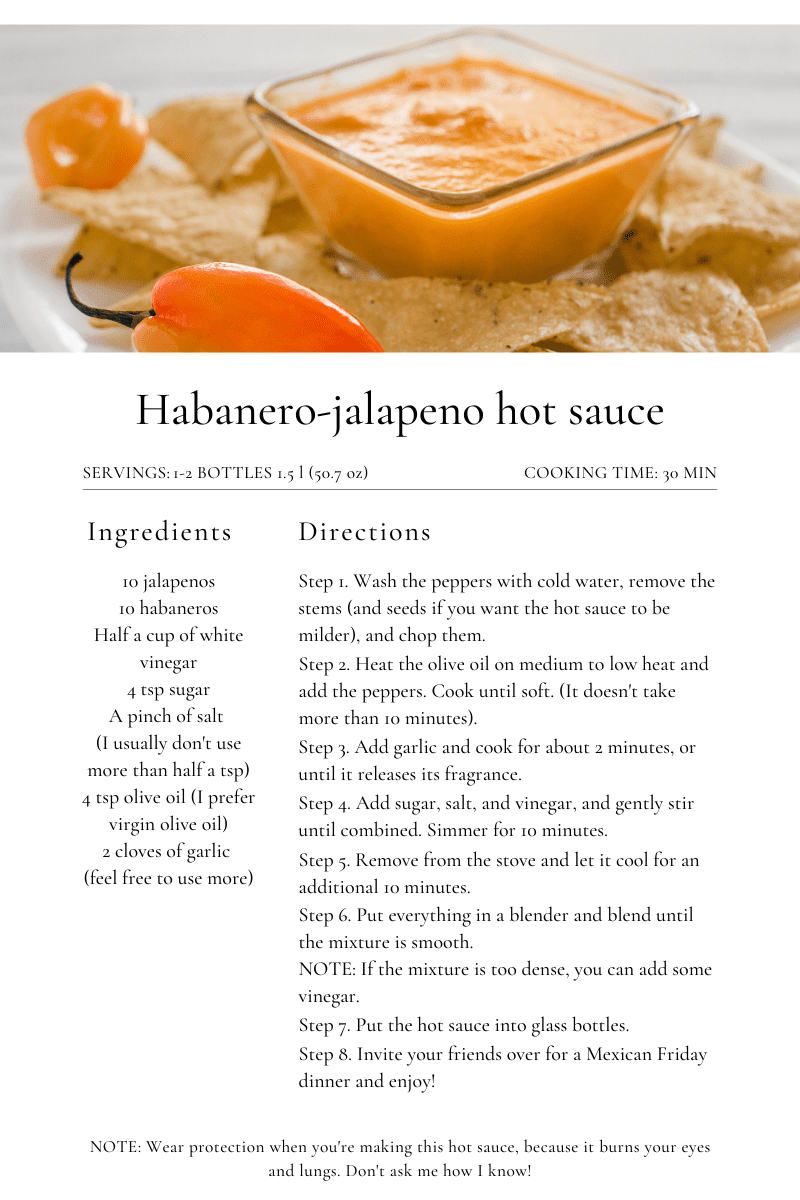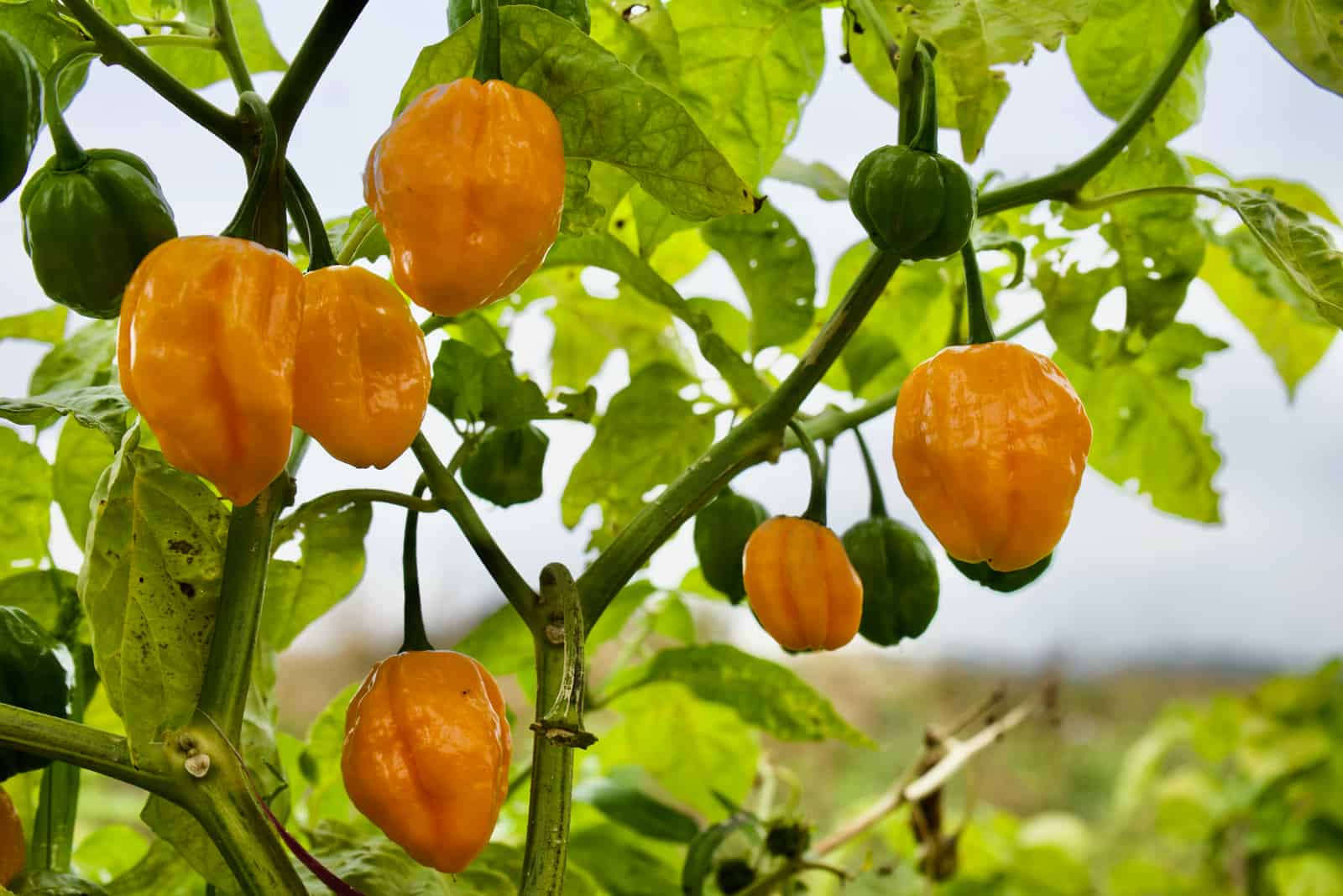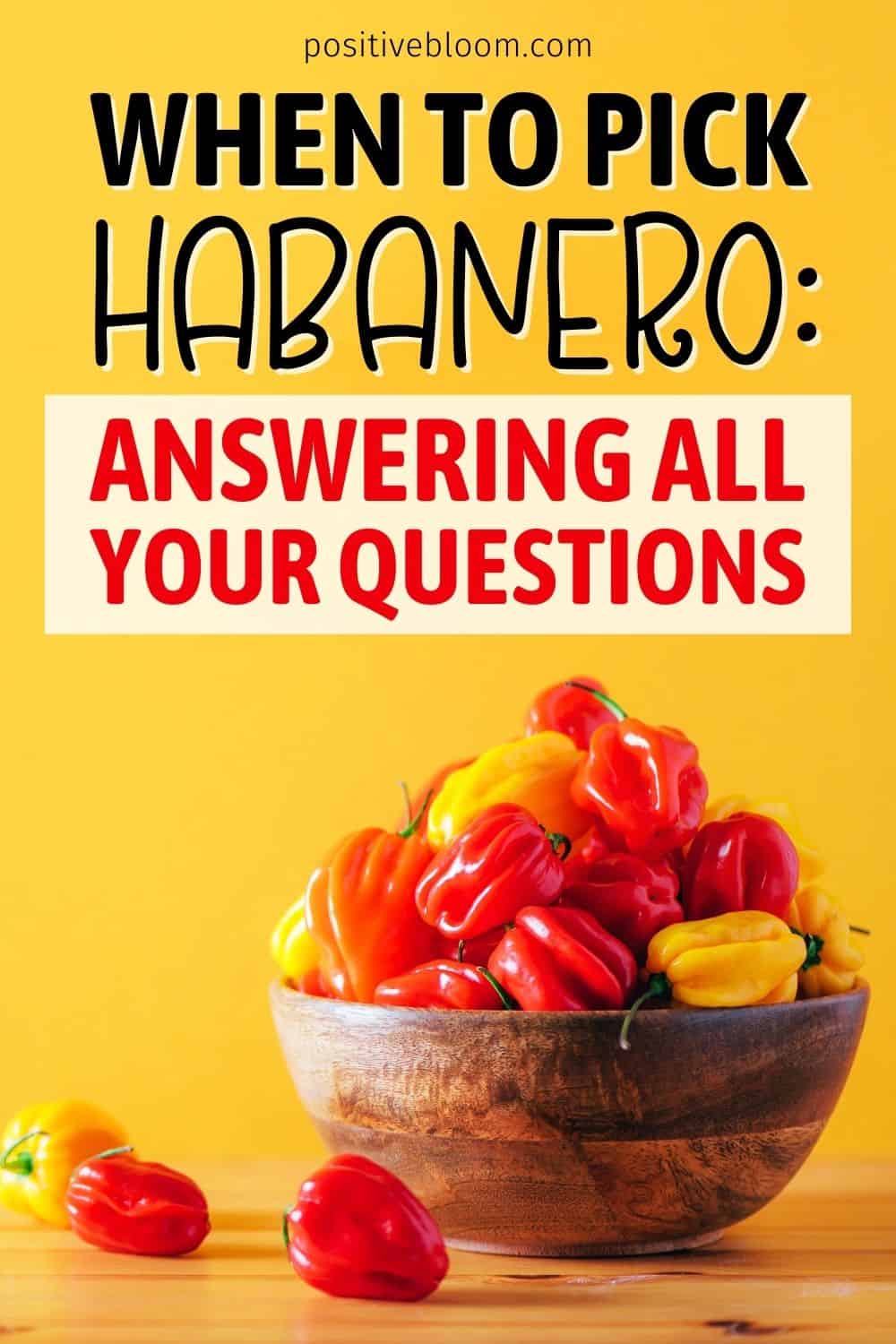Habaneros are hot peppers that are a staple in every spicy food lover’s pantry. If you want to start growing your own habanero plants and need to know more about when to pick habanero, then you’ll find everything you need to know and more in this article.
First, general information:
[table id=9 /]
Now that you know some basic information about these chillies, it’s time to learn when to pick habaneros.
You will also find a short care guide that will help you get a large harvest of these spicy pepper plants, so let’s get started!.
When To Pick Habanero Peppers
I’m sure you’re dying to know when to pick habaneros, but bear with me. You must first learn how to plant and take care of them so they produce chili flowers and fruit in the first place.
Without this, there won’t be anything to pick!
Short Care Guide
In this care guide, you will find everything you need to know about growing habaneros.
Light
Habaneros need full sun in order to grow, blossom, and produce fruit. Without at least 6-8 hours a day of direct sunlight, their growth will be stunted and the pepper plants will become leggy, resulting in reduced fruit production.
If you don’t have a place that can give them the sunlight they require, you can try grow lights. They worked for me!
Water
If you want to avoid bitter habaneros, then you should also avoid overwatering. Too much water can lead to root rot as well as bitter habaneros, which nobody will enjoy.
Only give them water when the topsoil is dry (and don’t water it too much) and you can’t go too far wrong.
Another method for avoiding frequent watering is to mulch the soil with plastic or grass clippings. This way, the soil will retain more moisture and you won’t have to water these hot peppers more than once a week (two times tops).
Temperature
Habaneros love warm climates. Anything lower than 60°F (15°C) or 90°F (32°C) can potentially harm these plants and prevent them from bearing fruit.
Keep this temperature range in mind when you start growing habaneros, and if you live in a colder area, you can always grow them in a greenhouse.
Soil And Fertilizer
The prefered soil for all varieties of habaneros is well-draining soil with enough aeration and organic material.
If you cannot decide which soil to use, simply buy an every-day potting mix and add some perlite for drainage and compost to enrich it in nutrients and you’re all set.
Habaneros don’t like too much fertilizer because it can lead to fertilizer burn. It’s also important to use a balanced fertilizer because nitrogen will help your plant grow and phosphorus and potassium will help your pepper flower and bear fruit.
Transplant
The best time to transplant habaneros is 2-3 weeks after the last frost. This way, you can be sure the soil temperature is above 65°F (18°C) and that the cold cannot harm your peppers.
Plant the habaneros in a moist soil rich in nutrients and with good drainage. Also, make sure you don’t plant them too close together because they grow and spread rapidly.
You can always check how gardeners all around the world do it, and this video can help you improve your transplanting skills.
Pruning
It’s not strictly necessary to prune habaneros, but it can be quite beneficial. Pruning habaneros early on can actually make them grow more flowers, which will result in more fruit.
You can prune early flowers as this will only improve the root system and help the plant grow bigger and healthier.
You can also cut off some of the bottom leaves later on to give your plant some air.
Pruning can also help habaneros fight off certain diseases and pests, so you should also take that into consideration.
4 Signs Of Ripeness
Now that we know more about how to grow habaneros, we can talk about the perfect time to pick them.
In the following section, you will learn the signs that indicate you have a ripe pepper waiting for you in the garden.
Size
One of the main indicators of habanero ripeness is size.
When this pepper variety is ready to be picked, its fruit will be 1-2.5 inches (2.5-6cm) long, but this depends on the variety of habaneros.
Color
Color is a main indicator of ripeness for many hot pepper growers out there. When habaneros change their color from green to their expected color, they are fully ripe.
However, if you just can’t wait any longer, or you prefer less spicy habaneros, you can also pick them when they’re green. It takes about 75 days after transplant for the fruit to turn green, and you can enjoy these spicy peppers even if they don’t turn bright orange or red.
Brown Lines
The most important indicator for me are brown lines. If you see brown lines on your habaneros, that means they are ready to be picked regardless of the size or color.
These brown lines represent growth lines, and when they form on a pepper it means that it has finished growing.
Easy Picking
The last indicator of ripeness is easy picking. You may notice that some peppers almost slide off into your hand, whereas others literally fall off the pepper plant.
When this happens, it’s your cue to start harvesting. Some fruit may not come off as easily as the first two or three, but don’t worry, just tug them slightly and you’ll have plenty of peppers in no time!
Don’t tug them too hard though, because this will only damage the plant. Instead, use gardening shears or a knife to cut off the fruit.
It is recommended that you harvest the peppers as soon as the fruit is ripe, because habaneros, like jalapenos and other types of peppers, are indeterminate peppers, meaning that they will produce fruit until the frost kills them.
If you want to harvest habanero peppers in great quantities, then pick the habaneros as soon as you notice they’re ripening.
Time To Pick Habanero Peppers
Different types of peppers have different ripening times, and the same goes for chili peppers like habaneros.
Even though you can memorize when your variety is ready to pick, knowing the growing stages of chili peppers can make you an experienced pepper grower really quickly.
Jamaican Chocolate Habanero
This type of habanero usually takes 100 days to ripen, and grow up to 1.5-2 inches (3.5-5cm) long.
They are the color of milk chocolate, so be sure not to mistake them for one!
Red Habaneros
You will know that the red habanero is ripe when it reaches a size of 1.5-3 inches (3.5-7.5cm) long.
They usually ripen after 100 days. When it changes color to dark red and gets some creases, you will know it’s the right time to pick it.
Red Savina Habanero
You will know that your red savina is ripe when it gets its signature dark red color and reaches a size of 2 inches (5cm) long.
One thing you should know about red savina, is that up until recently it was the hottest pepper in the world. That title now belongs to the
Carolina reaper, but still, approach this red pepper with caution!
Caribbean Red Habanero
The Caribbean red habanero is super hot. It reaches 450,000 SHU on the scoville scale. It takes around 100 days for it to fully mature, and you will know it is ready for picking when its small, lantern-shaped fruit turns that famous shade of red.
The fruit of this amazing habanero can be between 1 and 2 inches (2.5 and 5cm) long, but don’t be afraid, there will be more than enough for your hot sauce and salsa.
Orange Habanero
The Orange habanero is probably one of the most famous habaneros. It needs around 110 days after transplant to reach full maturity.
When you notice that they are bright orange and smooth, it means they are ready to be harvested. Once they ripen, they can be 1-2.5 inches (2.5-6cm) long.
Yucatan White Habanero
This is a special one. Unlike all the other habanero peppers, the yucatan white habanero does not have an amazingly bright color. Rather, it is exotically white and reaches a size of 1-2.5 inches (2.5-6cm) long.
However, they can be a lot smaller than that and usually look like white jelly beans. They are full of wrinkles, but don’t let them fool you!
They are not your everyday bell peppers and jalapeno peppers.
They are extremely hot, and yet have a sweet and fruity flavor. It usually takes them around 110 days after transplant to ripen.
Can You Pick Habaneros When They Are Green
Of course you can harvest green habaneros. However, you should bear in mind that they are usually less spicy when they are green.
If you’re not sure whether you can stand the heat, it wouldn’t be a bad idea to pick some green habaneros to try and then go from there.
That’s how I did it!
Will Habaneros Ripen After Picking
Yes, habaneros will ripen after being picked. If you’re not sure about the heat level and you simply want to “test-drive” them you should pick a few green samples to try them out.
These green peppers can also ripen to beautiful shades of red and orange if you simply put them on a south-facing windowsill. This will provide them with enough sunlight to stimulate the change of color.
What To Do With Habanero Peppers From The Garden
Habaneros are amazing, but so are cayenne peppers, scotch bonnets, and serranos. Growing them all from pepper seeds is very rewarding.
Even though they have a long growing season, they can set fruit all summer and fall, or at least until the cold weather comes and they are destroyed by the frost.
If you have planted too many habanero seeds, but have invested lots of time into seed germination and now don’t know what to do with all your habanero fruit, here are some ideas.
You can make amazing hot sauces and salsas from red and orange varieties of habanero, and you can even make marmalade from orange habaneros.
Here is my all-time favorite recipe for habanero-jalapeno hot sauce:
10 jalapenos
10 habaneros
Half a cup of white vinegar
4 tsp sugar
A pinch of salt (I usually don’t use more than half a tsp)
4 tsp olive oil (I prefer virgin olive oil)
2 cloves of garlic (feel free to use more)
Step 1. Wash the peppers with cold water, remove the stems (and seeds if you want the hot sauce to be milder), and chop them.
Step 2. Heat the olive oil on medium to low heat and add the peppers. Cook until soft. (It doesn’t take more than 10 minutes).
Step 3. Add garlic and cook for about 2 minutes, or until it releases its fragrance.
Step 4. Add sugar, salt, and vinegar, and gently stir until combined. Simmer for 10 minutes.
Step 5. Remove from the stove and let it cool for an additional 10 minutes.
Step 6. Put everything in a blender and blend until the mixture is smooth.
NOTE: If the mixture is too dense, you can add some vinegar.
Step 7. Put the hot sauce into glass bottles.
Step 8. Invite your friends over for a Mexican Friday dinner and enjoy!
NOTE: Wear protection when you’re making this hot sauce, because it burns your eyes and lungs. Don’t ask me how I know!
Q & A
There are many questions about habaneros, and in the following section you will find the answers to your most frequently asked questions.
What color habanero is the hottest?
Red Savina is the hottest habanero pepper, and you can deduce from its name which color it is: red.
However, even though it is super hot, it still cannot match the ghost pepper and its 855,000-1,463,000 SHU.
Wow, that’s really hot!
How long will habaneros last?
If you leave your habaneros on a counter in the hot summer months, they can last 3-5 days. Habaneros usually last up to 2 weeks in your fridge. If you put them in a freezer they can last up to a year.
The best way to store habaneros is to dehydrate them, this way they will last for many a year.
What are the benefits of habaneros?
Hot peppers have many health benefits, and habaneros are really hot. They contain plenty of vitamins A and C, which is why they are believed to prevent cancer, especially prostate cancer.
They are full of capsaicin, which is anti-inflammatory and is beneficial to people dealing with headaches and arthritis.
Capsaicin can also help you on your weight loss journey. Basically, it increases the processes that raise and lower your body temperature, and this speeds up the metabolism in return.
Habaneros are also good for heart disease because they lower your blood pressure and cholesterol.
Wrapping Up
We’ve really learned a lot about when to pick habaneros, how to take care of them, and what to do with them after we pick them.
We cannot eat them raw, or at least we don’t if we want to avoid a lot of pain, but we can make some amazing hot sauces and marmalades which everyone will love.
So, what are you waiting for? Now is the perfect time to go ahead and plant a colorful habanero garden of your very own!
Until next time!
Like this post? Please share or pin it for later!

